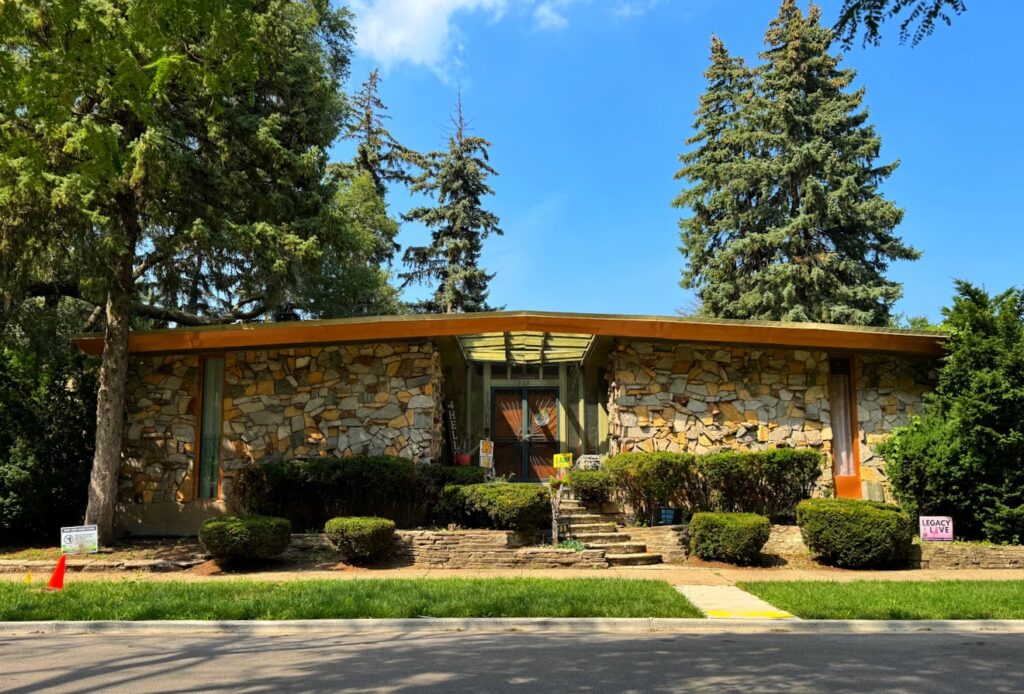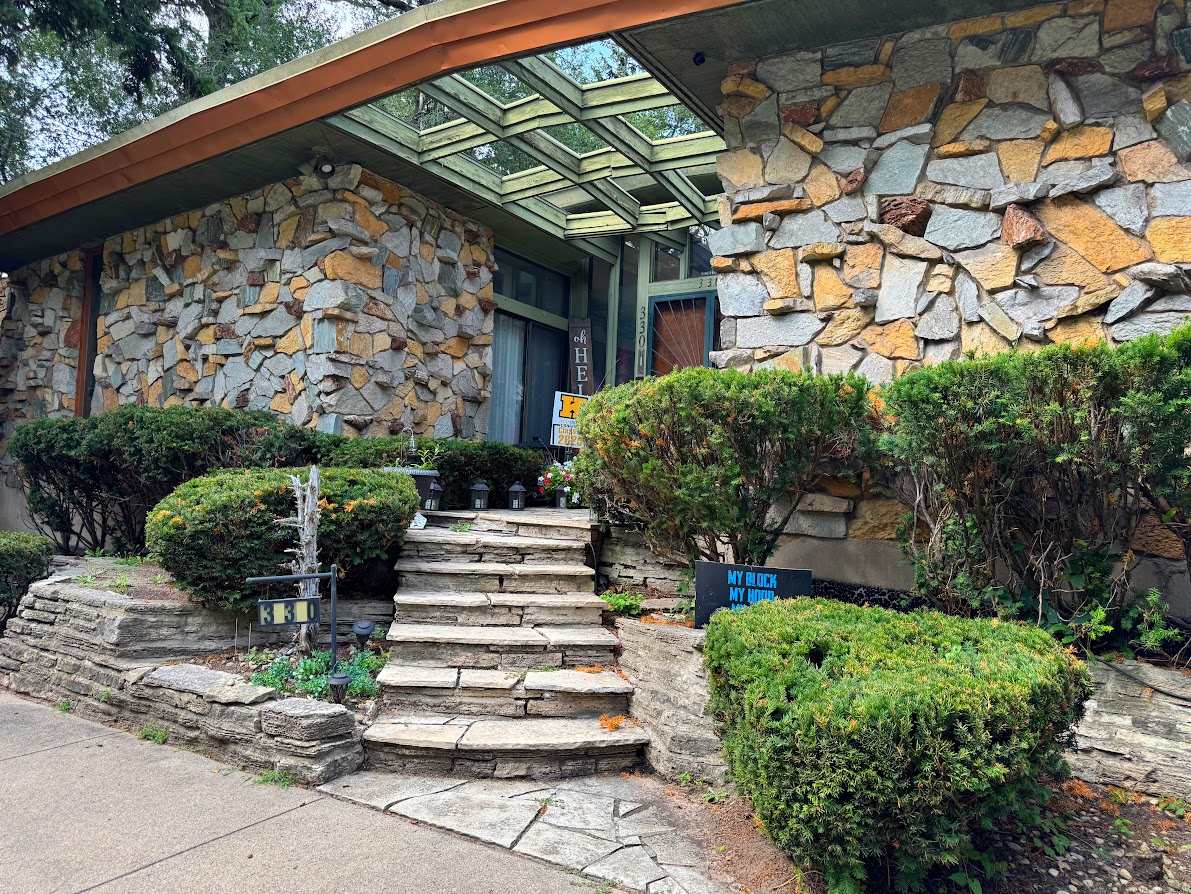Chicago history is often hidden in plain sight in the structures that surround us. From the extraordinary terra cotta-clad buildings standing sentinel over Cottage Grove to the bungalows marching along its side streets, Chatham is full of remarkable stories. And perhaps none are so compelling as those told by the instantly recognizable mid-century modern architecture commissioned by the Black professionals that made Chatham their home in the 1950s and ’60s.
Most Chicagoans are well aware of how the Great Migration and reactions to it shaped our city, yet the numbers are still shocking. In 1910, 40,000 Black people lived in Chicago, with 78 percent of them forcibly concentrated within the geographically tiny “Black Belt.” Racially restrictive covenants kept them there until 1948, when these were ruled unenforceable by the Supreme Court (they were not ruled illegal, however, until passage of the Fair Housing Act of 1968). Slowly, Black folks began to move further south, relocating from neighborhoods being decimated by dubious “urban renewal” projects and redlining, and staking their claims in new ones.
In 1950, Chatham was less than 1 percent Black. When internationally renowned gospel legend Mahalia Jackson purchased her home in 1956, she was only the second Black homeowner on her block. The Chicago Defender documented the race-based violence she endured. Jackson persevered, and soon more Black homeowners joined her, moving into Chatham’s bungalows and those gorgeous, terra cotta-clad buildings as white tenants flew out toward the suburbs. Other new arrivals made their mark in brick and mortar, building architecturally distinctive mid-century modern homes and cementing Chatham as the center of a vibrant and creative Black middle class.
Some of them were architects themselves, like the brilliant John Moutoussamy, the first Black architect to design a high-rise building in Chicago. Moutoussamy built a startlingly modern home for himself in Chatham in 1954, then designed a couple more for others. In 1963, Joan and George Johnson, of the eponymous Johnson Products Company, constructed their own striking home steps away from where Mahalia Jackson had experienced such strife less than a decade earlier. A few blocks north, Civil Rights activist and attorney Lawrence Smith hired the talented Black architect K. Roderick O’Neal to design his deceptively simple home. The next year, royalty came to Chatham, when restaurateur Helen C. Maybell Anglin—better known as the Soul Queen—established a remarkable presence right next door to Smith.
Designed by Milton A. Schwartz, an architect behind several distinctive Chatham residences, Anglin’s former home sprawls across its large corner lot organically, integrated into the landscape as if it grew there. The facade is a jumble of stones in tones that complement the colors of the house’s wooden elements.The central, recessed entry is reached by climbing stone steps, and is positioned under a green canopy constructed of exposed wooden beams that open up to the sky above, leaving the entrance bathed in sun-dappled beauty.

Like her home, Anglin was extraordinary. Photos of her in front of the house in 1974 show a tall, proud woman with a perfectly coiffed Afro, facing the camera with an easy confidence. Born in Alabama in 1929, her obituary explains that she moved to Chicago as a teen, opening her first restaurant in the heart of the “Black Belt” in the 1940s. Another successful restaurant in Bronzeville followed, with the final and most famous one—the Soul Queen—opening on Stony Island in 1975. Newspaper articles detail her passion for Civil Rights and her political connections. She fed everyone from Harold Washington to Dr. Martin Luther King, Jr., supported Black businesses, and was associated with the NAACP and the League of Black Women Voters. When she died, her services were held at Rainbow/PUSH Coalition. She was a woman both in tune with her community and attuned to its needs.
Mid-century architecture is associated with an expansive national mood following World War II. Magazines published lavish photo spreads of families entertaining in suburban midcentury splendor, establishing the look and the lifestyle as aspirational. But the suburbs were not welcoming to all, nor did all people share these same aspirations. Homes such as Anglin’s, while part of this architectural movement, also transcend it. When mention is made of Anglin entertaining in what Jet magazine referred to as her “‘Rock Castle’ mansion”, we also read how guests at this same party “dug into their pockets” to give to the Fund for Equal Justice.
The lives of Chatham residents were different from those of their suburban counterparts, and they used their space to achieve different goals. They took elements of mid-century design, but adapted the form to suit their own experiences and lifestyles as Black professionals in Chicago. In doing so, they constructed something entirely their own, making the built environment an expression of their unique identities and aspirations.
Former house of ‘Soul Queen’ Helen C. Maybell Anglin, 84th and Calumet.

